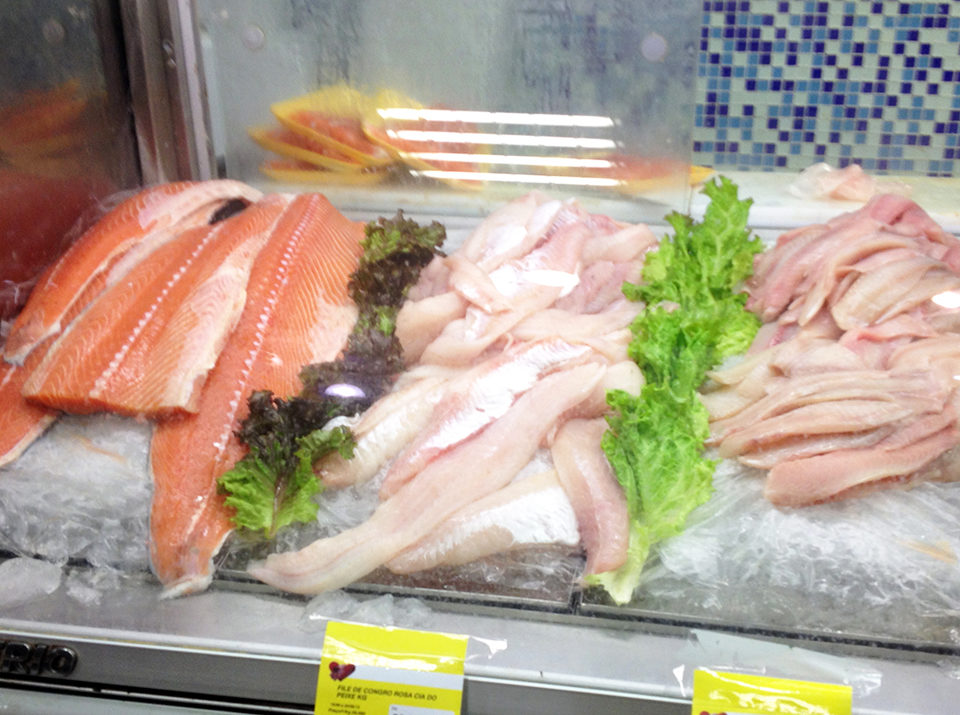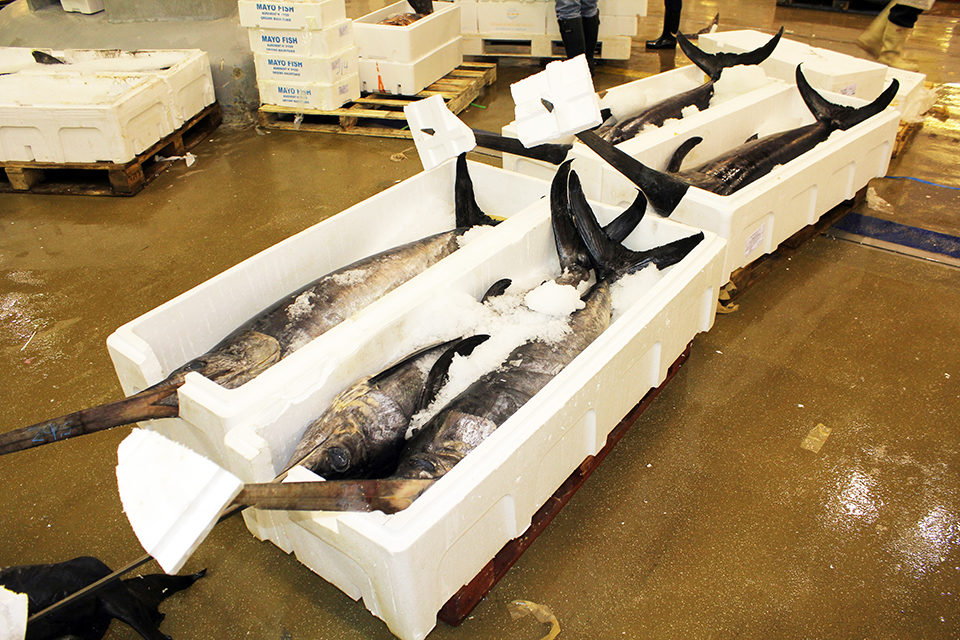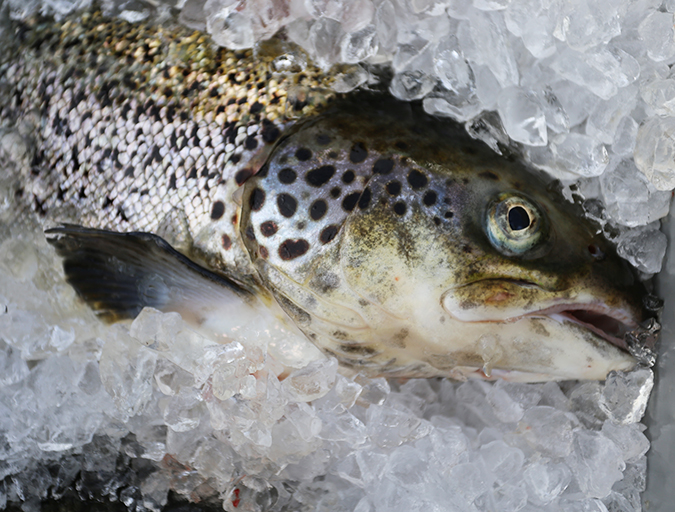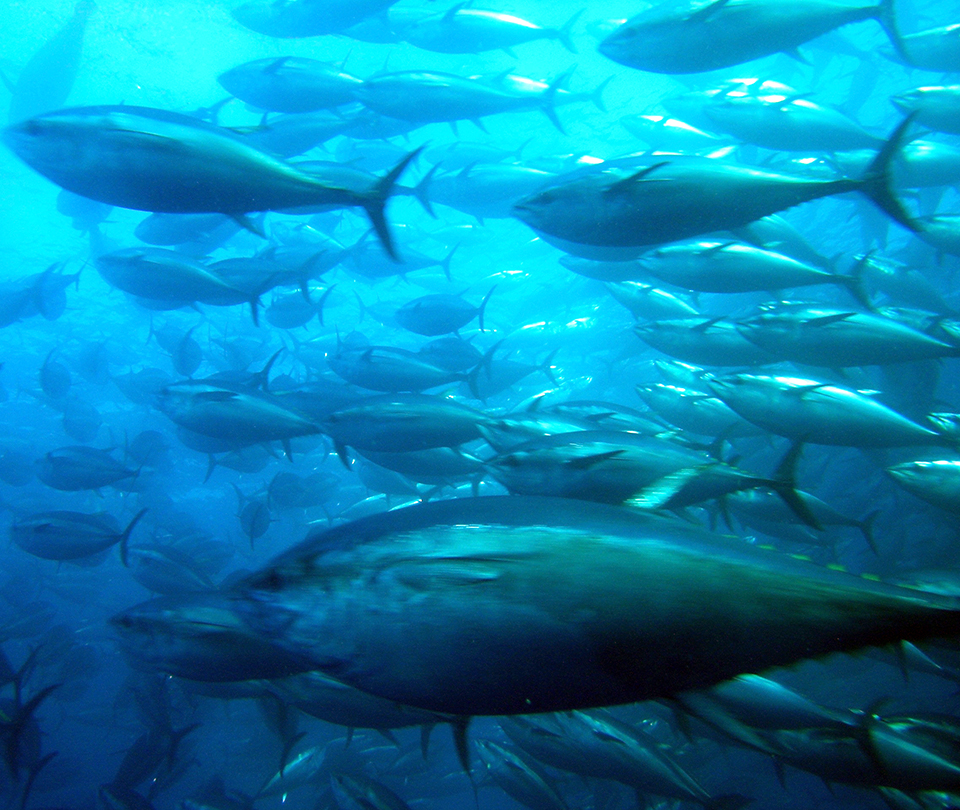Truthful, positive messages about seafood can make a difference

I had the great pleasure to visit Mexico and Brazil recently, where I had the opportunity to speak about standards, seafood consumption and increasing seafood capacity to many audiences. These elements are all inexplicably tied together.
In Mexico, I had a whirlwind tour of five very different areas of the country, while in Brazil, I was confined to beautiful Rio de Janeiro and the World Tilapia Conference. Throughout the journey, I had discussions with all sectors of the industry and government. These discussions simply hardened my thoughts on the way forward for all.
(In)accurate information
Media negativity gets mentioned wherever you go in the aquaculture/seafood world. Unprofessional journalism seems happy to print anything based on opinions instead of getting the peer-reviewed science and facts. We all know that anyone can put anything they like on the Internet, and regrettably some of that takes hold. We must continue to criticize such behavior and take responsibility that we ourselves do not pass on false information, whether well-meaning or otherwise.
It seems some work has been done in Mexico and Brazil. Great start. But as we know, companies like McDonald’s and Coca-Cola do not just advertise once to ensure their brands are kept at the tops of our minds. There is a constant flow of information utilizing all forms of media and, no matter what you think of such companies, they train their staff exceptionally well.
GILLS will continue to promote the concept that industry needs to adopt strict standards in all areas of its operations, empower staff through training/development programs, demonstrate that workers meet those standards and then promote the healthy products that come through from harvests.
Questions
During my trip, I asked the audiences three questions:
1. How many people do you know who have died from mercury poisoning from eating too much fish?
2. How much money does your business put aside for marketing your brand and products, or into a collective pool for joint promotion?
3. Who among you has had such a terrific, pleasurable experience when buying seafood at retail that you want to talk about it?
The answers were pretty much the same everywhere – none, nil and no one!
Mercury issue
The mercury issue always astounds me but manages to keep arising when some group feels like venting at the industry or about seafood. Let us be blunt: It is a “furphy,” Australian slang for a rumor or an erroneous story.
When the Codex Alimentarius Commission decision was made on mercury levels, it was based on two studies done by a joint United Nations Food and Agriculture Organization/World Health Organization (FAO/WHO) Expert Committee on Food Additives. One of these was on seafood consumption in the Seychelles, and the other was on seafood consumption in the Faroe Islands.
In the Seychelles, many studies have been done over many years by eminent nutrition scientists and researchers, but particularly Gary Myers and Sean Strain. More people need to read their reports, such as “The Seychelles Child Development Study of Methylmercury From Fish Consumption: Analysis of Subscales From the Child Behavior Checklist at Age 107 Months in the Main Cohort.”
In all the years of testing, no evidence of adverse effects from prenatal exposure to methyl mercury by consuming a high-fish diet has been reported. Note that people in the islands have seafood consumption eight to 10 times higher than that of Americans.
Where people consume seafood in the Faroe Islands, it was highlighted, children have shown deficits in learning and memory that correlate with cord-blood mercury levels. The big difference is the tendency to eat pilot whales in the Faroes. In “Mercury: Selenium Interactions and Health Implications,” eminent human and environmental health specialist Dr. Nicholas Ralston told us an answer lies in selenium, or the lack of it.
The most common-sense approach could have been to simply say: “Do not eat pilot whales.” But the two studies were combined to find some middle ground on the figures relating to seafood consumption. As a result, we had major countries issuing warnings to pregnant mothers, which added considerable fuel to the anti-seafood lobby.

Benefits, risks
Dr. Dariush Mozaffarian of the Harvard School of Public Health has said: “We have smart, well-meaning scientists who have been educated in a framework in which you assess risk and come up with tolerable intakes. But that’s the wrong framework, because you don’t eat pure contaminants, you eat fish, and you can’t get the risks without the benefits.”
What the enemies of seafood do not tell people is that not eating fish is also dangerous. Dr. Mozaffarian and other specialists point out that the risk of dying from heart disease is about 50 percent higher among people who don’t eat seafood than those who get one or two servings of a high-fat fish each week.
Since the average American eats only about 7.2 kg of seafood yearly – a much lower quantity than the 18 kg/year for the average world seafood consumer – the risk of too little seafood seems to be the larger threat. But the risk-only advisories, even some of the more balanced advisories, are scaring people away from eating fish.
Additionally, these tests were done many years ago. Farmed fish are not as exposed to mercury issues as their wild cousins, yet we have not attempted to revisit these findings and get the standard guidelines changed. Environmental Health Perspectives and Science Daily are also coming to this view – see here. We have learned from WHO/FAO that the benefits of eating seafood far outweigh any risks.
Marketing
Answers to my second audience question indicated that attempts at marketing are generally left to individuals, while a joint approach in sharing the burden may well be the better approach. This is not rocket science – invest in marketing and education, and you will reap rewards. Failing to do this will leave the industry languishing. Arguments always ensue when issues like levies are raised, but once addressed, the pain is generally forgotten, and used wisely, the effort is well rewarded.
Seafood is the most nutritious, healthy and sustainable protein you can put in your mouth. I believe the problem is that those within the aquaculture/seafood industry do not work together globally in the same way as the enemies of seafood do. Hopefully we can change that.
Consumer-industry interface
Regarding my third audience question, we do need to address the interface between the industry and consumers. Over the years, much work has been done in the harvesting and processing sectors, with massive gains through education, technology and standards. Yet we have tended to allow anyone to sell seafood.
Seafood retailing is the “window” of the industry. In order to increase seafood consumption, retailers must have certain skills and knowledge that, unfortunately, due to its nature of being an entry-level employer that seldom demands great skills, are lacking in the seafood industry.
Harvesters can have the best fully certified products in the world and great passion about their brands and products, but as soon as shipments leave their control, they are left to the mercy of the seafood chain and its end retailers.
In some countries, it is not possible to operate a butcher business without formal qualifications, as the slaughterhouses will not sell meat to unaccredited operators. But the supply chain for seafood is such that nearly anyone can start a fish retail business. This leads to poor practices, undercutting, waste, etc. I have first-hand experience with the difference training can make in retail and am constantly amazed that we allow untrained people to be the window of our industry.
Perspectives
Some potentially good news is on the horizon relating to this. If we can change the interface with the consumers and get out consistently truthful, positive messages about seafood through an education platform, ideally globally, then we will make a difference. If we can make shopping for seafood a pleasurable experience and empower consumers with sound advice, then the world is more than our oyster, it will be a shining pearl!
(Editor’s Note: This article was originally published in the November/December 2013 print edition of the Global Aquaculture Advocate.)
Now that you've reached the end of the article ...
… please consider supporting GSA’s mission to advance responsible seafood practices through education, advocacy and third-party assurances. The Advocate aims to document the evolution of responsible seafood practices and share the expansive knowledge of our vast network of contributors.
By becoming a Global Seafood Alliance member, you’re ensuring that all of the pre-competitive work we do through member benefits, resources and events can continue. Individual membership costs just $50 a year.
Not a GSA member? Join us.
Author
-

Roy D. Palmer, FAICD
GILLS
2312/80 Clarendon Street
Southbank VIC 3006 Australia
roydpalmer@gmail.com[109,111,99,46,100,111,111,102,97,101,115,108,108,105,103,46,119,119,119]
Tagged With
Related Posts

Aquafeeds
Fishmeal-free Atlantic salmon feed formulation shows promise
A recent study evaluated the effects of a fishmeal-free diet on Atlantic salmon performance and fillet quality during successful growout to market-size in a commercial-scale, land-based, closed-containment system using water recirculation technology. Test fish performed well, with 97 percent survival during the 10-month growout period.

Intelligence
Is the seafood story that complicated?
The United States Food and Drug Administration has updated its advice for pregnant women on mercury and seafood with greater emphasis on the benefits of eating fish. This is a positive story, but reporting on the new perspective muddied its message with opinion and innuendo. Let us all find the way to continue to promote aquaculture’s healthy, renewable products in ways that keep the stories simple, so the messages are not lost on the journey to consumers.

Intelligence
New year wishes for health and seafood
To help increase seafood consumption and gain recognition for the many health benefits of seafood, the author identified three wishes for 2014. Change the risk profile of seafood to defuse the sensationalized status of mercury. Professionalize the capability of the retail industry and create an avenue for consistent, positive messages sent to consumers. Increase education to girls and women about the unique benefits of seafood.

Intelligence
Public opinions pose barriers for tuna consumption
Safety and sustainability are key concepts affecting consumers’ decisions on tuna consumption. Although the benefits of consumption exceed the potential negative effects, tuna’s harmful attributes tend to negatively impact purchasing in at-risk groups.


